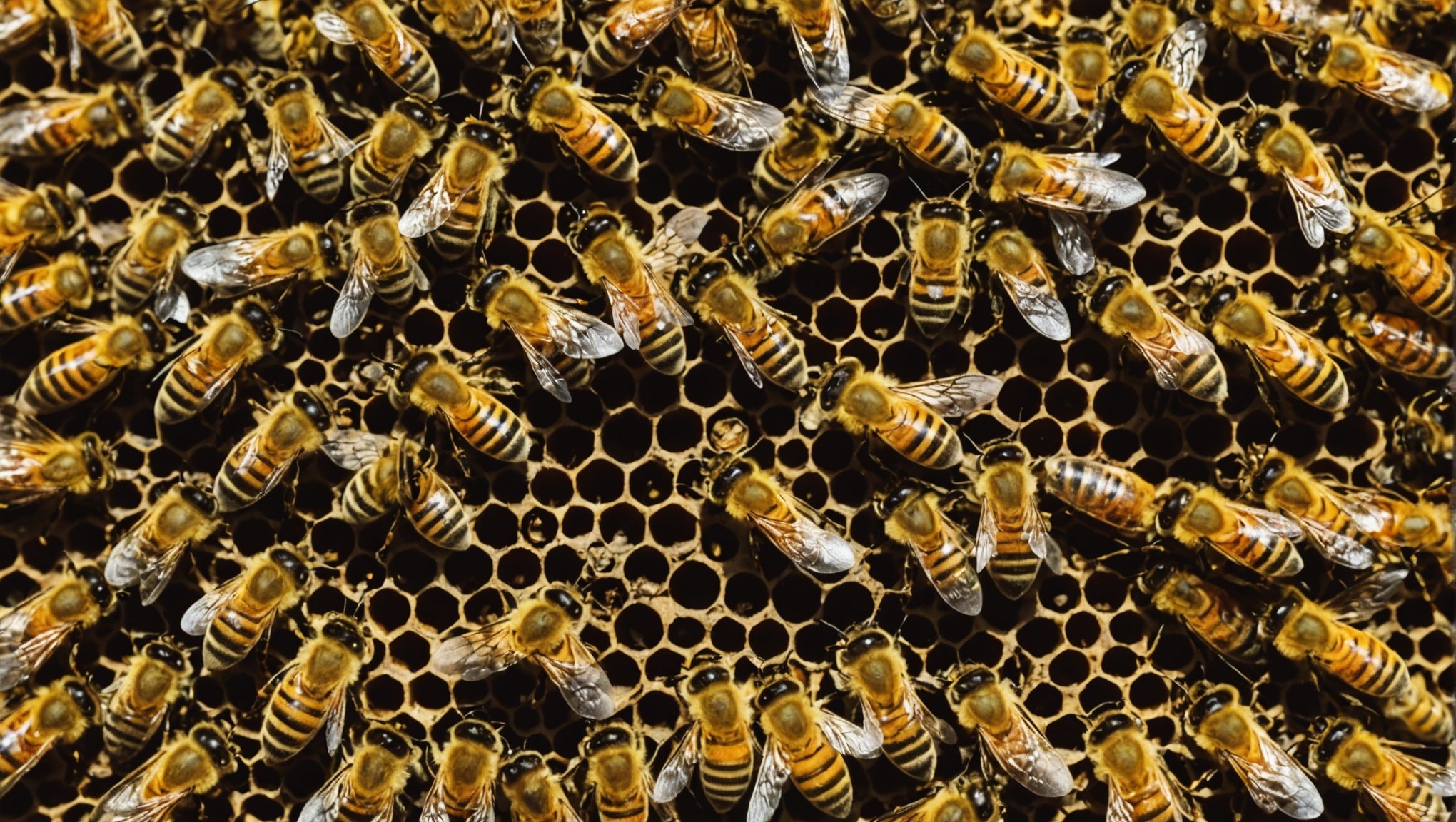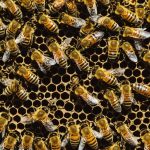The UK’s ban on neonicotinoids has sparked significant debate over its effects on bee populations and agricultural practices. As one of the most controversial pesticides, neonicotinoids have been linked to declining bee health, raising urgent questions about food security and biodiversity. Farmers face the challenge of adapting their methods while ensuring crop yields. This examination explores both the ecological implications and the practical responses of agriculture to this pivotal regulatory shift. Understanding the balance between protecting vital pollinators and maintaining agricultural productivity is more important than ever.
Overview of Neonicotinoids and Their Use
Neonicotinoids, often referred to as neonics, are a class of pesticides that have become prevalent in modern agriculture. These agricultural chemicals are derived from nicotine and are known for their effectiveness in protecting crops from pests. Chemically, neonicotinoids act on the central nervous system of insects, leading to paralysis and eventual death, which makes them highly effective against a wide range of insect pests.
A lire aussi : Eco-Friendly Boating: Strategies for UK Owners to Protect Freshwater Ecosystems and Aquatic Life
Historically, the use of neonicotinoids in UK agriculture gained momentum in the 1990s. Their introduction was driven by the need for more efficient pest control solutions that could replace older, less effective pesticides. Farmers quickly adopted neonicotinoids due to their ability to be applied in various ways, such as seed treatments, soil applications, and foliar sprays, offering versatility in pest management strategies.
The widespread adoption of neonicotinoids among farmers can be attributed to their broad-spectrum activity and long-lasting effects, which reduce the frequency of applications needed. Additionally, their systemic nature allows them to be absorbed by plants, providing protection from within and minimizing the impact on non-target organisms when used correctly. However, the environmental impact of neonicotinoids has been a topic of concern, leading to increased scrutiny and regulation in recent years.
Avez-vous vu cela : Empowering UK Gardeners: Essential Roles in Preserving Native Plant Species
Rationale Behind the UK Neonicotinoid Ban
The decision to implement a neonicotinoid ban in the UK was driven by several critical factors. Central to this legislation were mounting concerns about the environmental impact of these pesticides, particularly on pollinators like bees. Scientific studies indicated that neonicotinoids could contribute to declining bee populations, prompting environmental advocacy groups to push for stricter regulations. The UK government, responding to these public health concerns and environmental advocacy, enacted policies to restrict the use of these chemicals.
In addition to domestic pressures, the UK ban aligns with broader environmental policy trends seen across the European Union. The EU had already established stringent restrictions on neonicotinoids, setting a precedent for other member states. By adopting similar measures, the UK not only addresses local environmental issues but also remains consistent with EU regulations, despite its departure from the union.
Globally, the trend towards banning or restricting neonicotinoids is gaining momentum. Countries around the world are increasingly recognizing the potential risks associated with these pesticides and are taking action to mitigate their impact on ecosystems. The UK’s legislation reflects a growing awareness of the need to balance agricultural productivity with environmental sustainability.
Ecological Impact on Bee Populations
The decline in bee populations has been closely linked to the use of neonicotinoids, raising significant concerns about the health of our ecosystems. Scientific studies have provided substantial evidence that these pesticides adversely affect pollinators, crucial for maintaining biodiversity. Research has shown that exposure to neonicotinoids can impair bee navigation, reduce foraging efficiency, and decrease reproductive success.
A notable study conducted by the University of Sussex highlighted a correlation between neonicotinoid exposure and dwindling bee numbers. This research demonstrated that even low levels of exposure could lead to significant population changes over time. The implications of these findings extend beyond bees, as pollinators are essential for the reproduction of many plant species, directly influencing biodiversity and ecosystem stability.
The broader ecological impact of declining bee populations is profound. Bees are responsible for the pollination of approximately 70% of the world’s crops, and their decline could lead to reduced crop yields and food shortages. Moreover, the loss of bees disrupts the intricate balance of ecosystems, affecting other species and leading to a cascade of negative effects on biodiversity. As such, the link between neonicotinoids and declining bee populations underscores the urgent need for sustainable agricultural practices.
Effects on Agricultural Practices
The neonicotinoid ban has significantly influenced farming practices across the UK. With traditional pest management strategies disrupted, farmers have had to adapt quickly to maintain crop health and yield. This shift has led to the exploration and adoption of alternative pest control methods, such as integrated pest management (IPM) and biological controls, which are more aligned with sustainable agriculture principles.
Crop management now often involves a combination of mechanical, biological, and chemical strategies to manage pests effectively. Farmers are increasingly using natural predators, such as ladybirds and parasitic wasps, to control pest populations. Additionally, the use of organic pesticides and crop rotation has become more prevalent, helping to maintain soil health and reduce pest resistance.
Economically, the transition to these new methods has had mixed implications for farmers. While some have faced increased costs due to the need for more frequent monitoring and alternative treatments, others have benefited from reduced chemical input costs and improved soil health over time. The move towards sustainable agriculture practices, though initially challenging, is paving the way for more resilient and environmentally friendly farming systems, ensuring long-term agricultural productivity and ecosystem health.
Benefits of the Ban for Bee Conservation
The neonicotinoid ban has ushered in positive outcomes for bee conservation, heralding a new era of ecological recovery. Following the ban, a noticeable uptick in bee populations has been reported, particularly in regions where these pesticides were heavily used. This resurgence is a testament to the resilience of biodiversity when given the chance to heal.
In specific regions, case studies have highlighted remarkable recoveries. For instance, in areas of East Anglia, bee populations have shown significant improvement, with a marked increase in both species diversity and numbers. These case studies serve as encouraging examples of how targeted policy changes can lead to tangible ecological benefits.
The long-term impact of reduced pesticide usage extends beyond bees. By fostering healthier bee populations, the ban enhances ecosystem services such as pollination, which is crucial for the reproduction of many plant species. This, in turn, supports a broader range of wildlife, promoting overall biodiversity. Moreover, healthier ecosystems are more resilient, capable of providing essential services such as clean air and water, which benefit both wildlife and human populations. The neonicotinoid ban thus represents a pivotal step towards sustainable environmental stewardship.
Drawbacks and Challenges Faced by Farmers
The neonicotinoid ban has introduced several agricultural challenges for farmers, necessitating significant adaptation in pest control strategies. One primary concern is the increased crop losses due to rising pest pressures. Without the broad-spectrum protection that neonicotinoids provided, farmers have reported higher incidences of pest infestations, leading to reduced crop yields and economic strain.
Transitioning to new pest control methods has also incurred substantial economic costs. Farmers must invest in alternative solutions, such as integrated pest management and biological controls, which often require more frequent monitoring and maintenance. This shift can be financially burdensome, especially for small-scale farmers who may lack the resources to implement comprehensive pest management strategies.
Moreover, resistance issues have emerged with some alternative methods, complicating efforts to maintain effective pest control. As pests adapt to new treatments, the efficacy of these methods can diminish over time, necessitating further innovation and adaptation. This ongoing challenge underscores the need for continuous research and development in sustainable pest control solutions. Despite these obstacles, the agricultural sector remains committed to finding viable ways to balance productivity with environmental sustainability, illustrating the resilience and ingenuity of farmers in the face of adversity.
Comparative Analysis with Global Neonicotinoid Bans
Examining global regulations on neonicotinoids reveals diverse approaches to managing their environmental impact. Many countries have imposed restrictions similar to the UK, prioritizing the protection of pollinators and biodiversity. For instance, France has implemented a comprehensive ban, prohibiting the use of neonicotinoids in all outdoor environments. This policy aims to safeguard bee populations and has spurred innovation in alternative pest control methods.
International case studies offer valuable lessons. In Canada, a region-specific approach allows provinces to tailor regulations based on local ecological needs. This flexibility has proven effective in addressing unique environmental challenges while supporting agricultural productivity. Similarly, in Japan, strict guidelines on neonicotinoid usage have been complemented by extensive research into integrated pest management (IPM), promoting sustainable agriculture.
A policy comparison highlights the varying success of these strategies. Countries adopting stringent bans report positive outcomes for bee health, with increased population stability and diversity. However, the effectiveness of global strategies often hinges on enforcement and farmer adaptation. Collaborative efforts, such as sharing research and best practices, are crucial for enhancing the impact of these regulations. By learning from international experiences, nations can refine their approaches to balance agricultural needs with ecological preservation.
Expert Opinions and Research Insights
Insights from ecologists and agricultural experts highlight the complex dynamics of the neonicotinoid ban. These professionals emphasize the need for a balanced approach to pest management that considers both agricultural productivity and environmental health. Ecologists argue that while neonicotinoids have been effective, their environmental costs, particularly concerning pollinators, necessitate alternative strategies.
Research studies have provided substantial evidence supporting the ban’s ecological benefits. Key findings indicate a positive trend in bee populations and biodiversity in areas where neonicotinoid use has ceased. These studies underscore the importance of sustainable practices in preserving ecosystem services and ensuring long-term agricultural viability.
However, there remain unanswered questions and areas for future research. Experts call for further investigation into the long-term effects of neonicotinoid alternatives and their potential ecological impacts. Additionally, understanding the socio-economic implications for farmers adapting to new pest control methods is crucial.
Future research should focus on developing integrated pest management systems that are both effective and environmentally friendly. By exploring innovative solutions and fostering collaboration between scientists and farmers, it is possible to address the challenges posed by the neonicotinoid ban while promoting sustainable agriculture.
Visual Representations and Infographics
In the realm of environmental science, infographics and data visualization play a pivotal role in conveying complex research findings. These tools transform intricate data into easily digestible visuals, enhancing comprehension and retention. The impacts of neonicotinoids, for instance, can be effectively illustrated through well-designed infographics, highlighting trends in bee population declines and the geographical spread of pesticide use.
Effective infographics often include clear, concise data points, and visual elements like charts or maps that simplify complex information. For example, an infographic depicting bee population changes before and after the neonicotinoid ban can vividly illustrate the pesticide’s ecological effects. Similarly, a map showing areas of high neonicotinoid usage can help readers grasp the scale and scope of its application.
When creating accessible visual content, it’s crucial to use straightforward language, contrasting colours for clarity, and ensure compatibility with screen readers for inclusivity. By focusing on these elements, infographics can serve as powerful educational tools, bridging the gap between scientific research and public understanding. Ultimately, well-crafted visual representations empower readers to engage with the data, fostering informed discussions on environmental sustainability.











